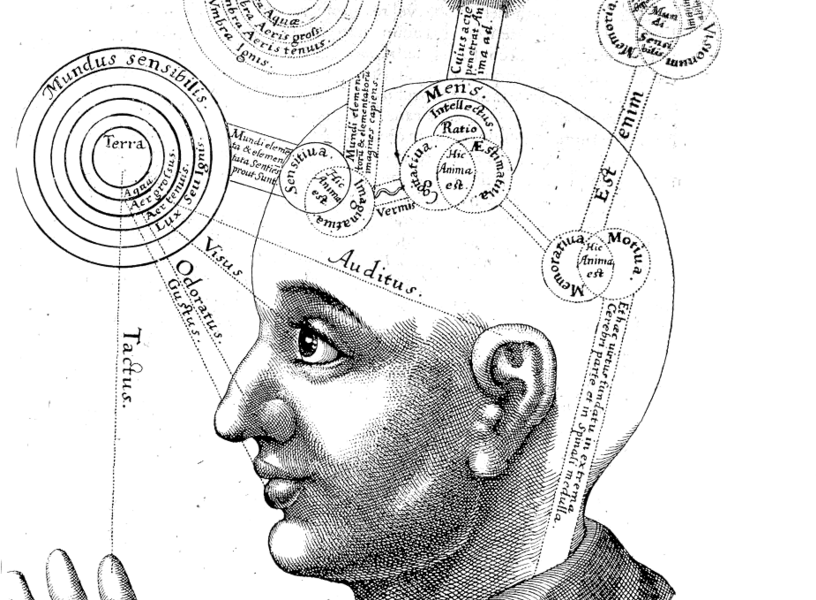via 3 Quarks Daily by Leanne Ogasawara
Not far from Amman, located just outside the city of Salt is the shrine of the Old Testament Prophet Joshua. It is a simple building containing nothing but a tomb. But what a tomb it is; for at about ten meters long, it makes quite an impression!
Continue reading
===================================
Why you often believe people who see the world differently are wrong
via Boing Boing by David McRaney

In psychology they call thinking that you see the world as it truly is, free from bias or the limitations of your senses, naive realism.
Continue reading
===================================
How Long-Necked Dinosaurs Pumped Blood to Their Brains
via 3 Quarks Daily: Brian Switek in Smithsonian Magazine
Living large isn’t easy. The sauropod dinosaurs – the biggest creatures to ever walk the Earth – required rapid growth rates, skeletons that were both light and strong and copious amounts of food, just for starters.
Continue reading
===================================
Burgess and Maclean: revelations
via The National Archives Blog by Dr Richard Dunley and Andrew Holt
Burgess and Maclean. The names have been etched into postwar Britain history, synonymous with espionage, intrigue and scandal.
The files released today [15 October 2015] at The National Archives show for the very first time the inside story on the investigation into these men, and reveal fascinating insights into who they were, why they betrayed their country and how they remained undetected for so long.
Continue reading
===================================
What Sam Phillips heard
via Arts & Letters Daily: Jonathan Bernstein in Oxford American
Since the early seventies, veteran music journalist (and longtime Oxford American contributor) Peter Guralnick has been one of the foremost authorities on mid-twentieth century American music. From his early collections of artist portraits like Feel Like Going Home and Sweet Soul Music to later titanic biographies of Sam Cooke and Elvis Presley, Guralnick has spent the past fifty years writing about, and celebrating, the history of soul, blues, r&b, country, and rock & roll music with feverish care and devotion.
Continue reading
===================================
Mathematics: Logic and Lewis Carroll
via 3 Quarks Daily: Francine F. Abeles in Nature
In 1855, Charles L. Dodgson became the mathematical lecturer at Christ Church College in the University of Oxford, UK. His job was to prepare Christ Church men (for it was all men) to pass examinations in mathematics. Dodgson (1832–98) would go on to publish Alice's Adventures in Wonderland (1865) and Through the Looking-Glass (1871) under the pen name Lewis Carroll, but he also produced many pamphlets and ten books on mathematical topics.
Continue reading
===================================
"Long-lost" 1928 Disney animation with 'Oswald the Lucky Rabbit' found in BFI archives
via Boing Boing by Xeni Jardin
Mickey Mouse and Bugs Bunny's long-lost, long-eared ancestor has been discovered in the National archive of the British Film Institute.
Continue reading
===================================
Willoughbyland: England's Lost Colony
via 3 Quarks Daily: Adrian Tinniswood at Literary Review
Here are two things you might not know about Suriname, as the lost colony of Matthew Parker's title is known today. It boasts the largest ants in the world; and in spite of a widely held belief that it lies somewhere in the South China Sea, it is in fact on the northeast coast of South America.
Continue reading
===================================
'Abrahamic religions' – From interfaith to scholarship
via OUP Blog by Guy G. Stroumsa
Together with Ulysses, Abraham is the earliest culture hero in the Western world. More precisely, as Kierkegaard, who called him ‘the knight of faith,’ reminds us, he has remained, throughout the centuries, the prototype of the religious man, of the man of faith. The wandering Aramean from the Book of Genesis, who rejected his parents’ idols and native Mesopotamia to follow the call of the One God to the land of Canaan, started a saga reverberated not only in early Jewish literature, but also in the New Testament (Galatians 3: 6-8), and in early Christian literature. Abraham (Ibrahim in Arabic) is also a leading figure of the Qur’an, where he is called ‘God’s friend.’ From the Hebrew Bible, the New Testament, and the Qur’an, the figure of Abraham became paradigmatic for Jews, Christians and Muslims. In particular, all argued they were following Abraham’s original conception of religion, and all claimed to be the true followers of Abraham’s religion, his only spiritual heirs. As is so common in families, a common father proved to be an element of discord, not of unity. Much in the sad, long, and complex story of religious intolerance and violence between Jews, Christians, and Muslims goes back directly to the inheritance of Abraham’s original religion. This is also true, of course, about the many other religious groups issued from the Abrahamic trunk, such as Samaritans, Bahais, or Mormons.
Continue reading
===================================
In Praise of Ardor
via 3 Quarks Daily by Mara Naselli
One evening in February 2012, I was in a Chicago noodle shop looking for a table for one. The television was on – a news report from Syria. The Syrian Army had begun its attack on Homs. The frame of the screen, jostling in the confusion, captured the faces of a woman and a boy. The woman was distraught. The boy, bewildered. I watched agape, for an instant transposing myself in the place of the woman and my own sons in the place of the boy. Children cannot take in their shattering world. The slight young man waiting tables that evening must have seen something in my expression. He changed the channel to a soccer match.
Continue reading
No comments:
Post a Comment